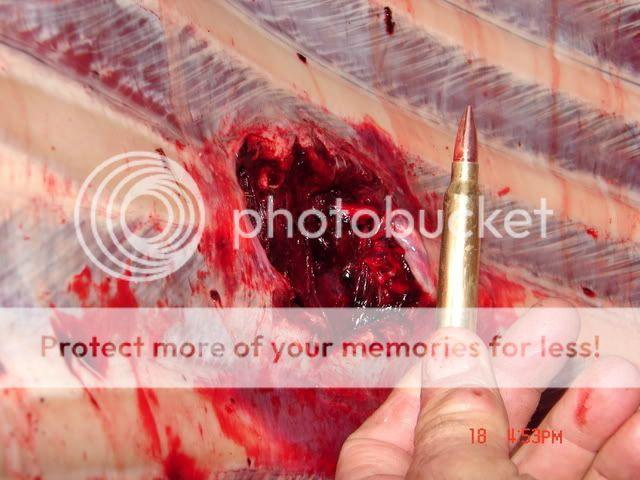Guy M
Well-Known Member
Okay - any of us can look at a trajectory table, or even come up with our own from one of the various ballistics programs... And even an old Jarhead like me can read that some combinations have higher retained velocity & energy downrange, due to a high ballistic coefficient.
But what hits harder? Does frontal area make any difference on impact, like it can with the big-bore stoppers used on dangerous game? By "hitting harder" I mean, does it produce more of a visible, obvious impact on the game animal?
Does a .338 dia bullet hit harder than a 7mm bullet - if they are producing about the same amount of energy? Does a bigger diameter bullet have any more shocking power, knock-down power, killing power than a smaller one?
I've shot deer with all sorts of stuff, from a .223/55 gr combo to my .45-70 and a .50 cal muzzle loader... Most have not however been at longer ranges. I know that for me, the bigger bullets have almost always produced more of a visible impact & seriously quick incapacitation - a soft lead 385 gr .50 cal hollowpoint bullet is a very effective deer-killing tool, with no tracking required.
So from you other hunters - are you seeing a difference in the field between the 6.5's, 7mm's, .30's, .338's? Do you think bullet diameter has any role or is it simply energy delivered and point of impact.
I'll be the first to state that I think point of impact is The Most Important part in producing instant one-shot kills.
Curious about your results & observations!
Regards, Guy
But what hits harder? Does frontal area make any difference on impact, like it can with the big-bore stoppers used on dangerous game? By "hitting harder" I mean, does it produce more of a visible, obvious impact on the game animal?
Does a .338 dia bullet hit harder than a 7mm bullet - if they are producing about the same amount of energy? Does a bigger diameter bullet have any more shocking power, knock-down power, killing power than a smaller one?
I've shot deer with all sorts of stuff, from a .223/55 gr combo to my .45-70 and a .50 cal muzzle loader... Most have not however been at longer ranges. I know that for me, the bigger bullets have almost always produced more of a visible impact & seriously quick incapacitation - a soft lead 385 gr .50 cal hollowpoint bullet is a very effective deer-killing tool, with no tracking required.
So from you other hunters - are you seeing a difference in the field between the 6.5's, 7mm's, .30's, .338's? Do you think bullet diameter has any role or is it simply energy delivered and point of impact.
I'll be the first to state that I think point of impact is The Most Important part in producing instant one-shot kills.
Curious about your results & observations!
Regards, Guy

